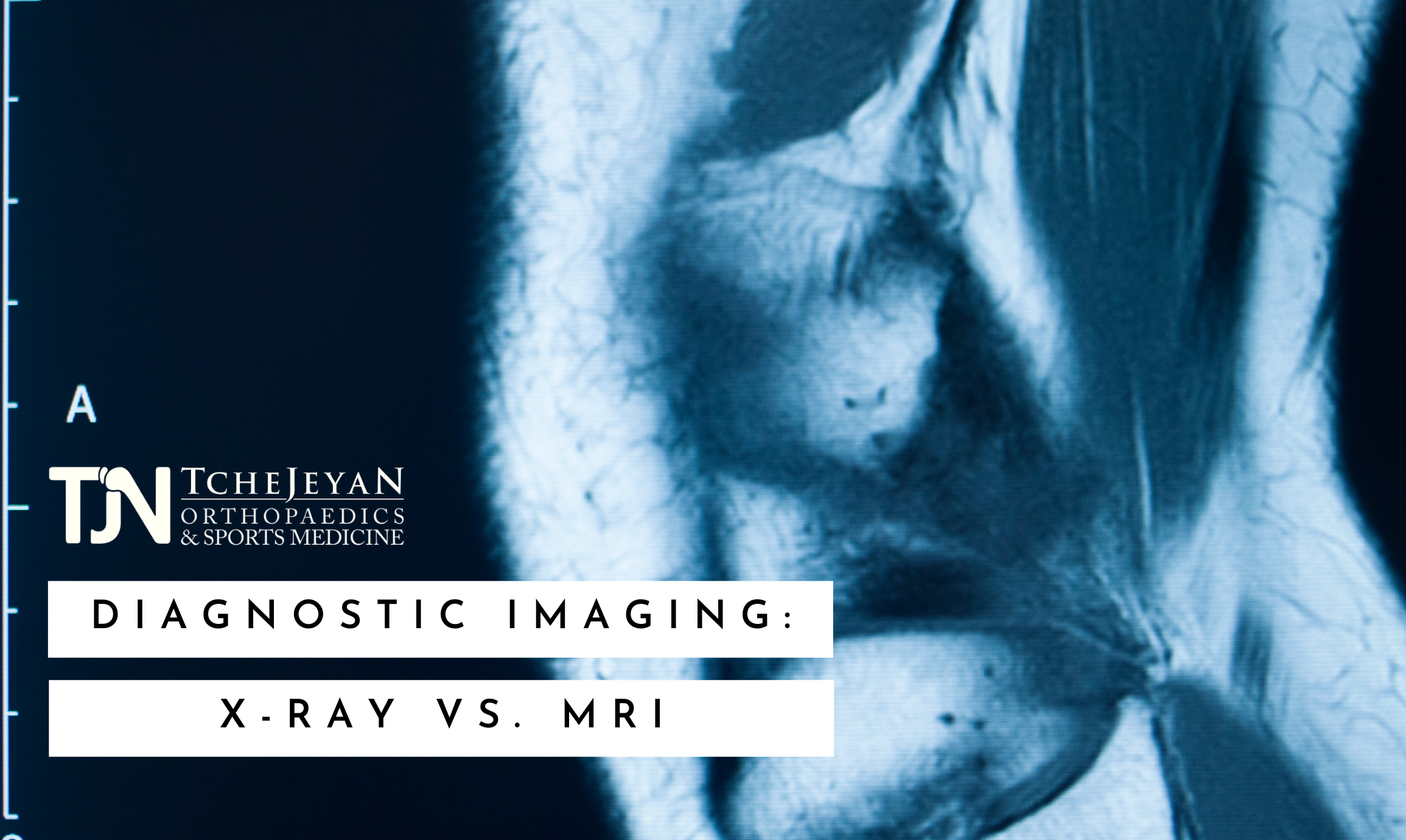Oftentimes, patients experiencing knee pain visit an orthopedist toward the end of a long healthcare journey. More than half of Dr. Tchejeyan’s patients come to him after they’ve already met with a primary care doctor, physical therapist, rheumatologist, or chiropractor. With each case, the initial patient perception is that the MRI is the test of choice for any knee issue. Dr. Tchejeyan seeks the whole picture, and therefore advocates for more than just an MRI.
MRI vs. X-Ray
An MRI refers to Magnetic Resonance Imaging which looks at the bone, cartilage, ligaments, fat, skin, and more. It’s a highly detailed test that provides explicit findings for the surgeon and the patient. However, it is not a weight-bearing study, since patients lie down and pass through the imaging tube while getting an MRI.
An X-Ray uses photographic or digital imaging to reveal the internal composition of something, particularly bone structure. X-Rays can be taken when the patient is in various positions, allowing for a variety of angles to be considered.
Without a doubt, an MRI of the average middle-aged patient’s knee would reveal a lot! That’s because as we age, there are distinct changes to our anatomy. Such MRI’s will often show common issues such as:
- Fluid in the Knee
- Bone Marrow Edema
- Degenerative Meniscus
- Articular Cartilage Loss
- Baker’s Cysts
While the MRI is a telling test, it may not be fully diagnostic of a problem’s cause. The above findings could be incidental, or they could coexist with a bigger condition like an arthritic knee. In order to avoid unnecessary anxiety for the patient. Dr. T. combines that test with a weight-bearing X-Ray to view the full knee.
Full Knee Series X-Rays
A full series of knee x-rays will tell a surgeon how much cartilage is remaining in the joint. This joint space will reveal the patient’s candidacy for either conservative treatments like injections, or more specific procedures like partial or total knee replacement.
The following x-ray images are taken in order to determine an individualized plan for each case:
- Standing X-Rays:
- One view of both legs straight
- “Notch View” of both legs bent
- Lying Down X-Rays
- “lateral view” of knee caps
- “Sunrise View” under the kneecaps to see the articulation between the patella and the femur
These x rays tell a surgeon the most about how much cartilage is remaining in the joint. For instance, given the anatomy of the knee, standing x-rays will always show cartilage. If the articular enamel is worn down, the patient could be suffering from Osteoarthritis. As we age, cartilage is often reduced from a normal 5mm to bone-on-bone. This condition can be discoverable on an MRI. However, the x-ray will show just how much joint space there is.
People with moderate levels of arthritis often don’t do well with arthroscopic surgery. Just because the MRI shows a torn meniscus, doesn’t mean surgery is the answer. The best solution is to review your findings with a trained orthopedic specialist. An MRI is a valuable test, but an x-ray – when properly evaluated – provides the specific answers needed to make the best decision for a patient’s health and mobility.
To schedule a consultation at TJN Orthopedics, contact our office today!





[…] He’s had several cases where patients came to him for a second opinion. Through various imaging tests, Dr. T. determines a diagnosis and recommends the most effective solution that will have the best […]
[…] can be diagnosed. First, your orthopedic specialist will examine your knee, then likely take an x-ray or MRI in order to make an accurate diagnosis. Sometimes, a doctor will run an X-ray using contrast dye, […]